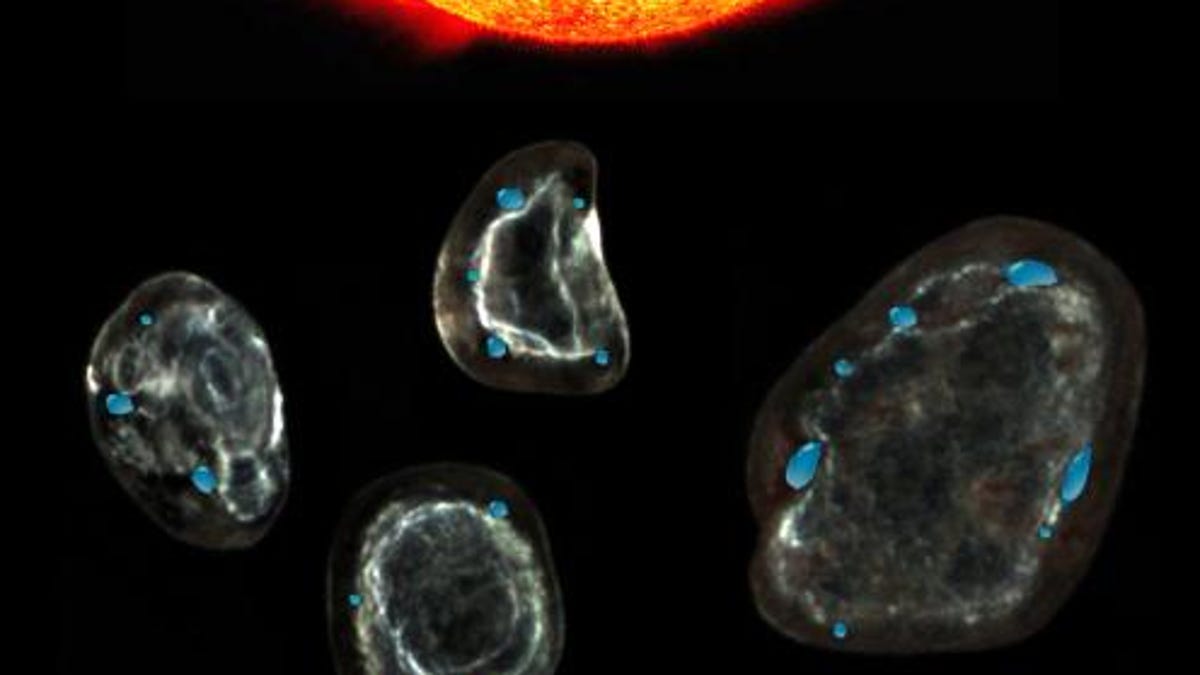Ingredients for life hitching ride on space dust, study says
Traces of water and organic compounds could be all around us, floating around space on ubiquitous interplanetary dust particles.

For years, astronomers have been scanning nearby asteroids, the moon, Mars, and deeper space for evidence of the building blocks of life.
Now, a new study in the Proceedings of the National Academy of Sciences finds that both water and organic material could actually have our planet surrounded, floating around space on ubiquitous interplanetary dust particles that constantly rain down on Earth and the other bodies in our solar system.
"It is a thrilling possibility that this influx of dust has acted as a continuous rainfall of little reaction vessels containing both the water and organics needed for the eventual origin of life on Earth and possibly Mars," researcher and study co-author Hope Ishii of the Hawaii Institute of Geophysics and Planetology said in a release.
Translation: tiny trace amounts of water and organics left over from the birth of our solar system could be riding the solar wind on specs of space dust that make their way to the surface of nearby planets, asteroids, and moons.
Scientists have suspected that one way water and other key components of life are delivered to the surface of Earth and other planets is by riding on the backs of comets that collide with them. This new research is in a way an extension of that hypothesis reduced to a molecular level, but with a key difference in how water molecules came to hang out on the rims of flecks of space dust.
In the case of comets, the icy space rocks import frozen water from beyond the solar system when they come to visit, but the traces of water on interplanetary dust particles are actually a product of the solar wind that blasts them with hydrogen ions, shaking up the atoms of the silicate mineral crystals in the dust particles. This process leaves behind some oxygen to react with hydrogen and create water molecules.
"Perhaps more exciting," Ishii said, "interplanetary dust, especially dust from primitive asteroids and comets, has long been known to carry organic carbon species that survive entering the Earth's atmosphere, and we have now demonstrated that it also carries solar-wind-generated water. So we have shown for the first time that water and organics can be delivered together."
In other words, the cheese and the sauce have been floating around space since nearly the beginning of time, just waiting to be wrapped up in a comfy corn tortilla atmosphere to seed the whole enchilada of life.
Next up, the researchers plan to look into how much water may be hitchhiking to the Earth's surface on space dust and what types of organic or inorganic compounds might be riding shotgun on the trip.
No research is in the works, however, to figure out how that jelly doughnut wound up on Mars.

